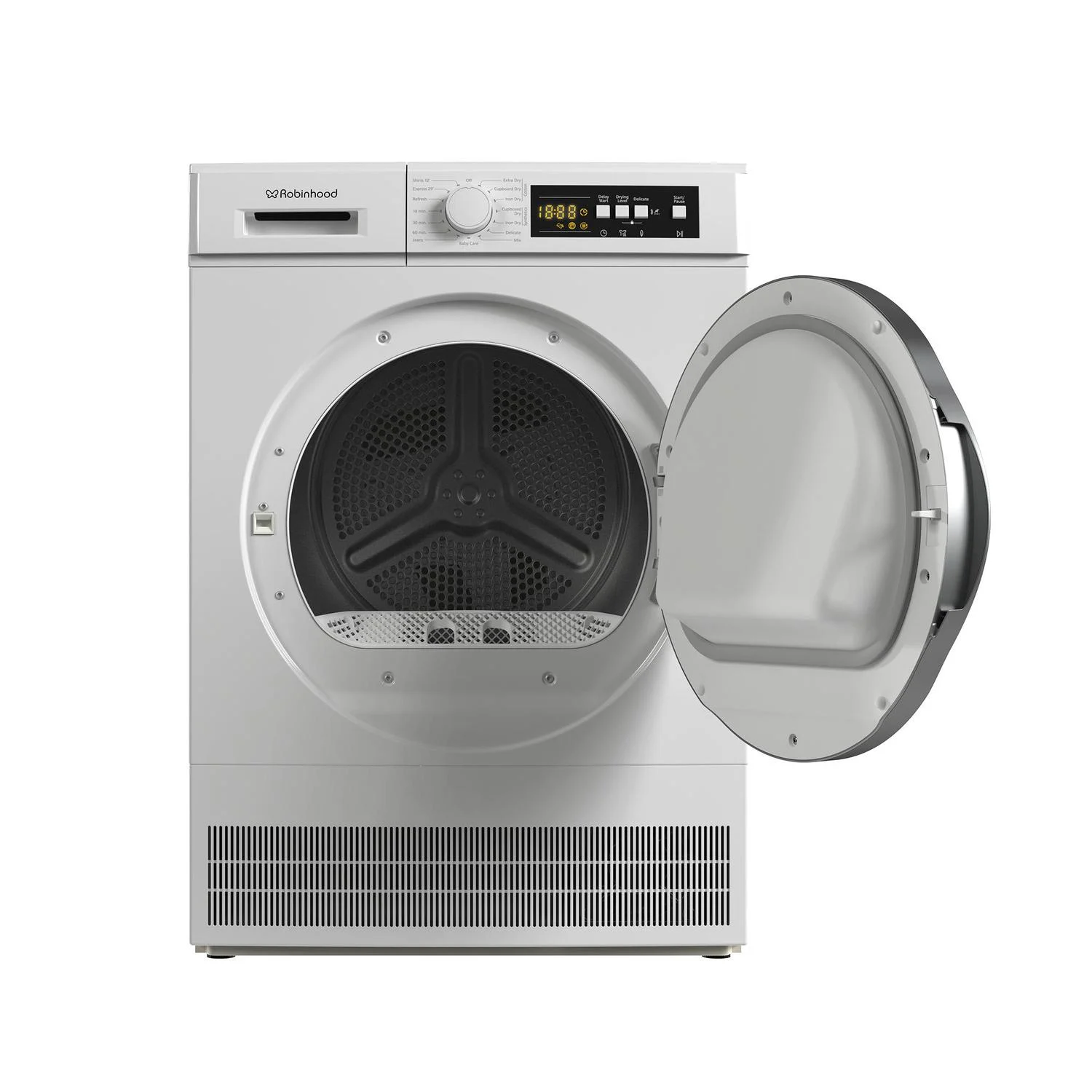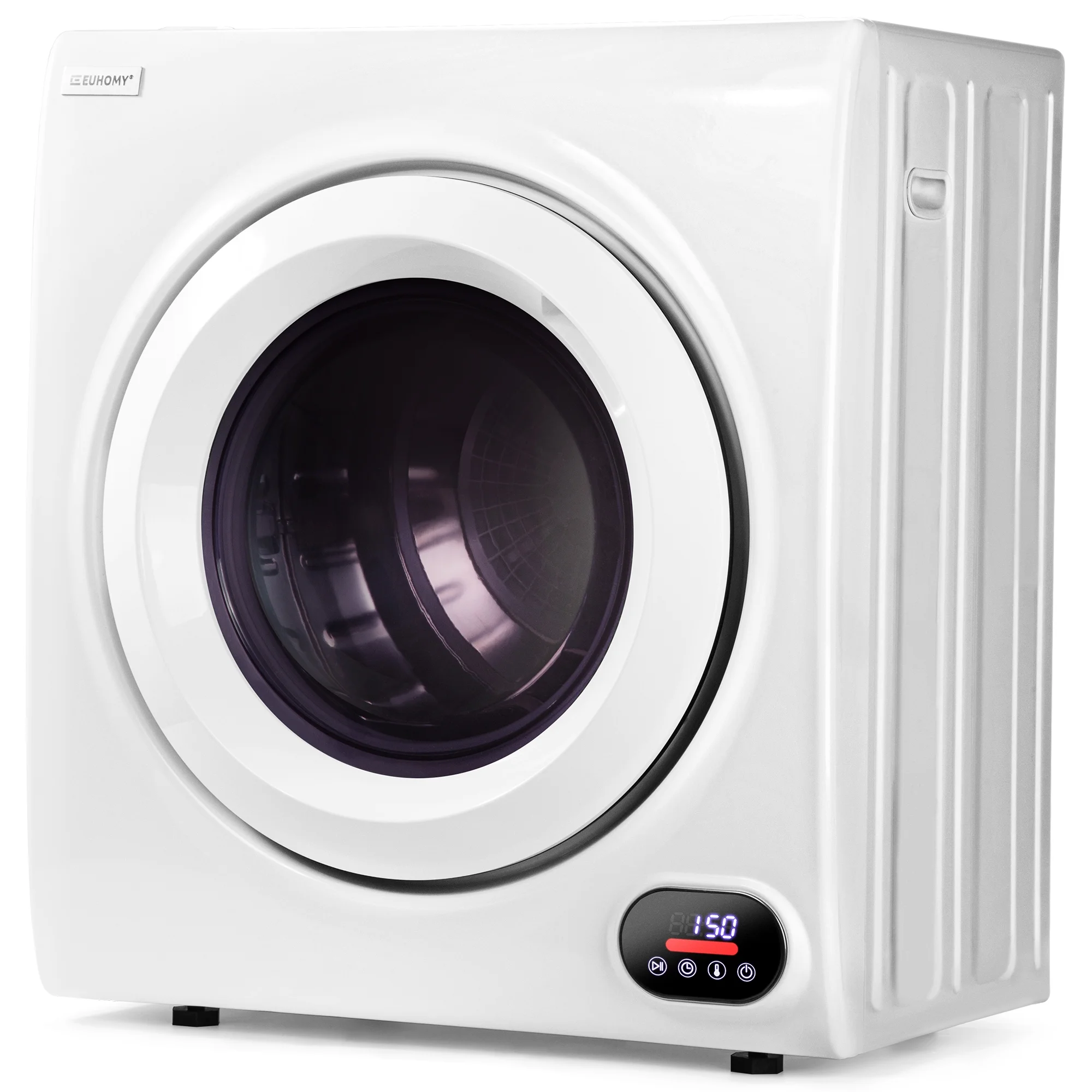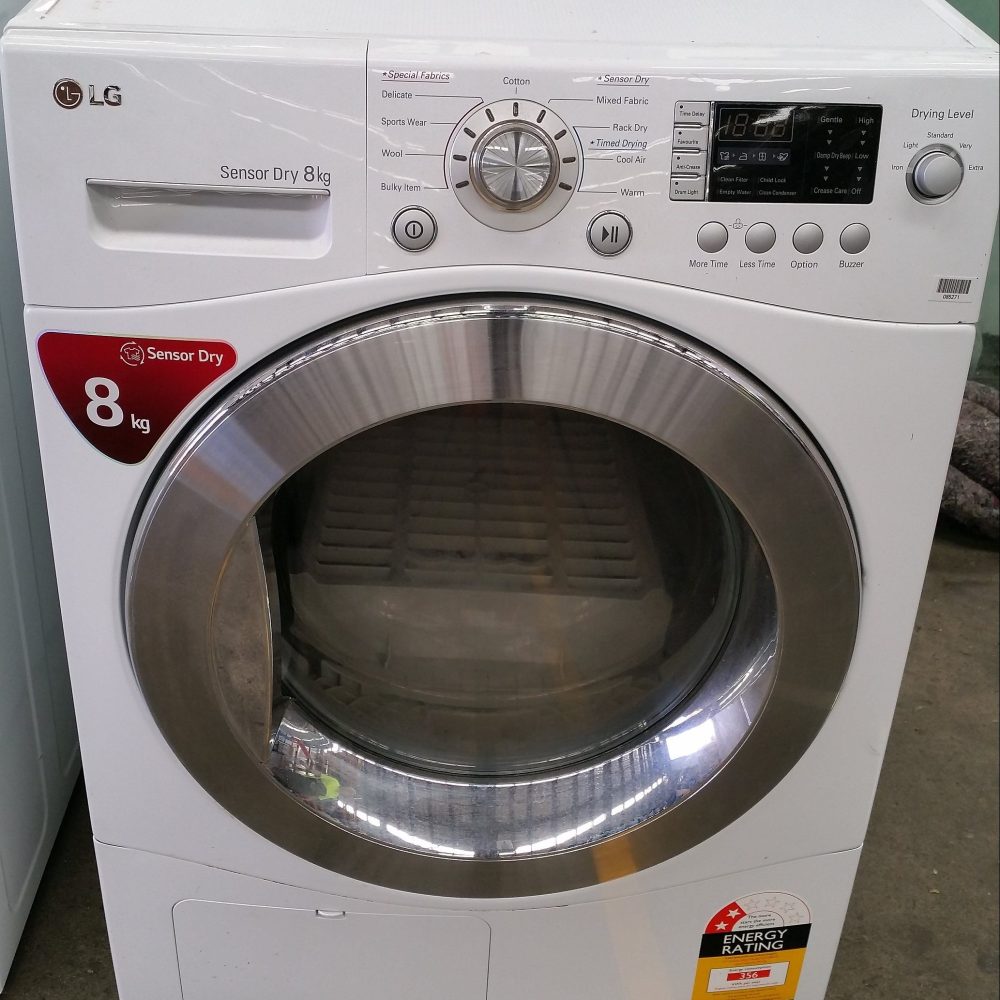The Beginnings: A Historical Perspective on Drying Clothes
Before modern machines, drying clothes was quite a chore. Imagine draping wet laundry over bushes or laying them flat on rocks, exposed to the sun’s warmth and the breeze’s gentle caress. This was the very early, manual method of drying clothes, an exercise in patience and at mercy to nature’s whims.

As societies advanced, so did the techniques for drying clothes. In some regions, people erected lines between poles or structures, creating the iconic image of clotheslines with garments fluttering like flags. In moments of bad weather, clothes drying moved indoors. Homes from different eras feature designs where ventilated areas were meant for air-drying laundry, away from rain or snow. Historical records show efforts to accelerate this process were ongoing.
The 18th-century brought a remarkable shift with the advent of the mechanical clothes dryer in France. These early devices, largely rudimentary and manual, hinted at humanity’s relentless pursuit to make daily chores like laundry more efficient. They embodied a drive towards innovation that would, centuries later, result in the electric clothes dryers we know today.
The idea of heat-assisted drying germinated long before electricity became a household staple. Inventive minds tinkered with designs to contain heat and circulate air to hasten the drying process. These ranged from simple racks positioned near fireplaces to more complex constructions mirroring ovens, dedicated solely to drying clothes.
The Advent of the Mechanical Clothes Dryer in the 18th Century
In the 18th century, drying clothes saw an inventive turn. France birthed the first mechanical clothes dryer around 1799. This contraption, known as the ‘ventilator,’ changed things up. People now had a barrel that rotated over a fire. The setup was simple but risky, with open flames involved.
It wasn’t long before drawbacks became clear. Clothes often ended up smelling of smoke and getting sooty. Worse yet, the risk of fire was high. America caught wind of this device, but adjustments were necessary. We needed a safer way to dry our laundry.
Enter George T. Sampson of Ohio. His solution? A fire-free approach. Placing a rack over a stove, he minimized dangers and kept clothes clean. On June 7, 1892, his design earned a patent. His ‘dryers,’ while not fully mechanical, offered a safer route to dry clothes and were used extensively.
This time in history set the stage for the machines we rely on today. A focus on safe, efficient drying methods grew. Who invented the clothes dryer became less about an individual and more about collective innovation. Early mechanical dryers were vital steps in evolving our laundry practices. We were moving away from the hazards of open flame.
Thanks to visionaries like Sampson, we made headway. Clothes drying was transitioning from risky business to a convenient task. This was the start of the journey toward the electric dryers we would soon embrace.
The Introduction of the First Electric Clothes Dryer
In the early stage of electric appliances, a significant leap occurred with the birth of the electric clothes dryer. This momentous event is attributed to J. Ross Moore, an inventive mind dissatisfied with traditional clothes drying methods. Moore sought to eliminate dependence on weather conditions and seasonal constraints, aiming for a more reliable means to dry clothing. His determination led to the first electric dryer prototype, built in his own shed with an added stove to generate heat.
Working tirelessly, Moore spent nearly three decades perfecting his idea. Despite setbacks and difficulties finding manufacturing support, his dedication prevailed. By the late 1930s, he partnered with Hamilton Manufacturing to produce the drum-type dryer. This model sold under the name ‘June Day’ began to hint at the convenience that would soon become a staple in homes.
The introduction of the first electric clothes dryer marked more than a technological breakthrough—it signaled the start of a new era in domestic chores. Moore’s invention opened doors for subsequent advancements, setting a precedent for further innovation in laundry appliances. With the electric clothes dryer, tasks that once took hours of manual labor and dependence on favorable weather now became a matter of mere minutes with the push of a button. The inception of the electric dryer didn’t just revolutionize laundry—it brought comfort and efficiency to households worldwide.
The question of ‘who invented the clothes dryer’ finds its answer in Moore’s ingenuity and persistence. His contributions laid the foundation for the modern clothes dryers we rely on, transforming the way we manage our laundry tasks and freeing us from the tyranny of weather-dependent drying. The electric clothes dryer has truly proven to be an invaluable invention in the journey of household convenience.
The Post-War Boom and Advancements in Dryer Technology
The post-war era sparked significant growth in dryer technology. As the economy boomed, so did household innovations. In the 1950s, widespread adoption of electric clothes dryers became apparent, thanks to improved economic conditions. People sought more convenient lifestyles, and the dryer was part of this new wave of domestic ease.
Manufacturers streamlined dryer designs during this period. They produced more efficient models capable of handling larger loads. Features such as adjustable heat settings and timed drying cycles started to appear. These innovations offered users greater control over the drying process. This development marked the beginning of automated laundry systems that significantly reduced manual labor.
The 1960s introduced even more advancements. Dryers with moisture sensors emerged, preventing clothes from excessive drying. This led to energy savings and better fabric care. Around this time, permanent press cycles were also developed, reducing ironing needs post-drying.
These technological leaps not only enhanced convenience but also safety. Early versions of safety measures, such as automatic shutoff functions, were implemented to reduce the risk of overheating and potential fires. New materials and better insulation improved dryer safety.
By the time the 1970s rolled around, gas-powered clothes dryers began to take hold. These alternatives to electric dryers were praised for their energy efficiency. Gas-powered dryers heat up faster and dry clothes quicker than their electric counterparts.
Throughout these decades, ‘who invented the clothes dryer’ became an ever-evolving answer. Innovators across the globe contributed to refining and reimagining this essential appliance. The advancements during the post-war boom set a new standard in drying technology, shaping how we manage laundry in our homes today.
 Safety and Convenience: From Open Fire Hazards to Automated Systems
Safety and Convenience: From Open Fire Hazards to Automated Systems
The journey of the clothes dryer from a risky, open-fire process to automated systems is marked by critical safety and convenience advancements. Gone are the days of smoky scents and soot-stained fabrics resulting from early drying methods. The introduction of the first electric clothes dryers led to a revolution in laundry practices, eliminating open fire hazards entirely.
Let’s explore how these developments unfolded:
- Early Improvements: Inventors sought to reduce the dangers of clothes drying. Racks over stoves, like George T. Sampson’s design, offered a safer solution and became the norm in many households.
- Electric Dryers: The first electric clothes dryer, by J. Ross Moore, avoided the use of fire altogether. This innovation provided a controlled, consistent heat source far from the risks associated with flames.
- Automated Systems: As technology progressed, dryers became equipped with timers and safety features. Autonomy in drying cycles meant less manual monitoring and a reduced risk of accidents.
- Safety Checks: Moisture sensors and automatic shutoffs appeared, boosting safety. These features prevent over-drying, energy waste, and potential fire incidents caused by overheating.
The demand for safer and more convenient clothes drying methods drove these changes. Moore’s success in who invented the clothes dryer was a pivotal moment. It steered society away from laborious, unpredictable outdoor drying to the push-button ease of today’s automated systems. With each advance, the clothes dryer has become a staple of safety and convenience in the home.
Energy Efficiency and the Rise of Gas-Powered Clothes Dryers
Energy efficiency in dryers took a leap forward with gas-powered models. These units, gaining popularity in the 1970s, were notable for their ability to dry clothes quicker than electric ones. They heat up faster and use the warmth more effectively. This means less time running, which is better for saving energy and lowering bills.
Early gas dryers had significant pros. Users saw quicker drying times and lower operational costs. This shift was a direct answer to the demand for more efficiency in household chores. With these dryers, laundry could be done more quickly, giving people more time for other activities.
The introduction of gas dryers also meant options for consumers. As energy prices fluctuated, some found gas to be a more affordable choice. This wasn’t just about faster drying. It was about economic savings and practical benefits.
Manufacturers kept their focus on safety. They included automatic shutoffs to prevent gas leaks. They also added sensors to monitor heat levels. This ensured that the rise of gas-powered clothes dryers didn’t compromise safety.
These advancements made gas dryers a strong competitor to electric ones. They answered the question of who invented the clothes dryer with a new twist. It was no longer just about creating the first dryer. It was about ongoing enhancements to make drying clothes safe, efficient, and convenient.
Today, gas-powered dryers remain a popular choice, especially in areas where gas is cheaper than electricity. They continue to be a part of how we push for efficiency in household appliances. With their faster drying times and potential energy savings, they set a new standard for what we expect from our dryers.
Modern Innovations: Additional Features of Today’s Clothes Dryers
Today’s clothes dryers boast features undreamed of by early inventors. These advancements reflect a commitment to ease, efficiency, and fabric care. Modern machines include a variety of novel features that enhance the user experience and demonstrate innovation’s ongoing role in domestic appliances.
- Moisture Sensors: Current models often include sensors that detect moisture levels. This technology stops the cycle when clothes are dry. It saves energy and prevents wear on fabrics.
- Steam Cycles: Some dryers now have steam functions. This technology removes wrinkles and odors without washing. The steam cycle refreshes garments with minimal effort.
- Smart Technology: Wi-Fi-enabled dryers offer remote monitoring and control. Users can start, stop, or check on drying from their smart devices. This feature adds convenience, fitting into the modern smart home ecosystem.
- Eco-Friendly Options: Energy-efficient models are more popular than ever. They use less electricity and help reduce carbon footprints. These eco-friendly choices appeal to environmentally conscious consumers.
- Large Capacity and Speed: Dryers today can handle large loads, cutting down on laundry time. Some models also offer quick-dry settings. These settings dry clothes in less time, offering further convenience.
The question of ‘who invented the clothes dryer’ now leads us to an array of contributors. Each new feature represents insights from diverse fields. They encompass advances in engineering, material science, and user interface design. As these innovations continue, the clothes dryer is set to remain an indispensable part of modern homes. It stands as a symbol of progress in the world of domestic appliances.
 The Impact of the Clothes Dryer on Modern Living and Laundry Practices
The Impact of the Clothes Dryer on Modern Living and Laundry Practices
The invention of the clothes dryer has transformed how we live and manage laundry. Here’s how:
- Time Savings: Instead of spending hours on laundry each week, dryers reduce drying time substantially.
- All-weather Laundry: No more waiting for sunny days. Dry clothes anytime with a dryer, rain or shine.
- Better Hygiene: Dryers provide a consistent, clean drying method, reducing the risk of outdoor contaminants.
- Fabric Care: With gentle drying cycles, today’s dryers extend the life of clothes by minimizing wear.
- Space Saving: Urban living often lacks space for line drying. Dryers fit neatly in small areas.
- Accessibility: For those unable to line-dry, such as the elderly or disabled, dryers offer ease of use.
- Economic Impact: Dryers have given rise to new industries and services, like laundromats.
The clothes dryer, once an unimaginable luxury, is now an essential appliance, thanks to the visionary inventors who asked who invented the clothes dryer. Its impact on efficiency, convenience, and modern practices in laundry care can’t be overstated. It has reshaped our household routines, making laundry day far less of a chore and more a simple task.
